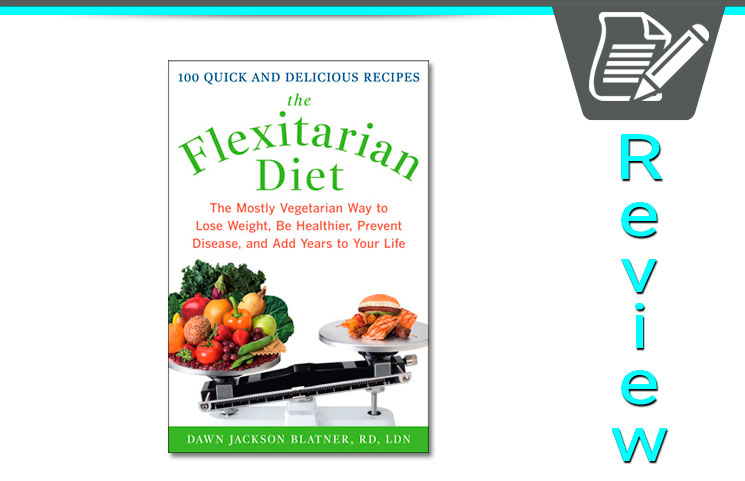Flexitarian Diet Review
The Flexitarian Diet is a subset of the vegetarian diet that focuses on mainly plant-based foods with the occasional meat dish.
Studies have proven that vegetarians typically weight less than meat eaters, have a lower incidence of common chronic illnesses, and spend less on medical expenses.
Highlights of the Flexitarian Diet
The creator of the Flexitarian Diet, Dawn Jackson Blatner, encourages dieters to ease their way into this diet. Blatner, a registered dietitian published a book in 2009 called
“The Flexitarian Diet: The Most Vegetarian Way to Lose Weight, Be Healthier, Prevent Disease, and Add Years to Your Life.”
Flexitarian Diet Benefits
Here are some of the highlights of this diet:
— You Don’t Need To Give Up Meat Completely: You do have to limit meat intake, but you don’t eliminate it completely. This cuts back on fat effortlessly. Plus, it increases fiber intake, which has a number of health benefits.
— Plants Are The Focal Point: While you do not need to give up meat completely, you certainly need to focus mainly on plant based foods. Beans, vegetables, and fruits should make up most of your diet, with the occasional meal including meat.
— It Is Great For Weight Control: The flexitarian diet is easily adaptable to low carb diets in the event you want to use it for weight control. For example, you can consume legumes and nuts, and eat the occasional meal including meat or fish, which provides you a full meal of protein, but almost zero carbs.
— Nothing Is Actually Off Limits: “Flex” means bend or expand, and this is exact what this diet allows you to do. Nothing is technically off limits, although plants are the focal point of the diet.
— It’s Well-Liked: Many surveys report that the flexitarian diet is in the top ten for weight loss, heart health, diabetes management, and it is one of the easiest diets to follow given its’ lax requirements.
Flexitarian Diet Limitations
The flexitarian diet is not great for everybody, especially if you are a heavy meat eater. If you crave meat or are accustomed to eating meat at almost every meal, then you may find this diet is difficult to follow.
Another problem is that you may need to get creative to develop a meal plan that is not boring or familiar. This is the most difficult limitation to the flexitarian diet and the most common complaint.
More Details
Dawn Jackson Blatner clearly outlines the guidelines to the flexitarian diet in her book. Start by swapping one meal containing meat each week with a pure vegetarian dish. Continue working your way up until you are converting more vegetarian meals. You still control the ability to decide how much meat, poultry, or fish you want to eat when it’s all said and done though.
Besides the small amount of meat, you should focus on these foods:
— Non meat protein sources like beans, legumes, soy products, and eggs
— Whole fruits and vegetables
— Dairy products like yogurt and cheese
— Whole grains like brown rice
Blatner also uses a rating system, and a beginning flexitarian can still eat 26 ounces of meat a week. Once a more advanced level is reach, only 18 ounces of meat per week should be consumed. Experts who have been using the diet for months should eat even less – perhaps as little as 8 ounces of meat per week.
Even at the bare minimum, a flexitarian is going to eat much less meat than the average diet. Although about a decade old, statistics from the USDA report that each citizen consumed nearly 200 pounds of meat and seafood in the year 2000. That’s 3.8 pounds a week, which is 6-7x what a flexitarian will consume per week. It’s also 33% more than the average amount of meat Americans eat just 50 years ago.
Despite it been listed as a flexible diet, the flexitarian diet uses what is known as a 3-4-5- approach to meals. Blatner suggests eating a 300 calorie breakfast, a 400 calorie lunch, and a 500 calorie dinner, along with two snacks at about 150 calories. This brings the total caloric intake to 1500 calories for the day, which may not be enough depending on your size, age, and activity level.
Flexitarian Diet Conclusion
If you need some flexibility in your diet, then this diet could be right for you. Humans enjoy more food choices than ever before, and it can be difficult to choose the right foods.
However, with the right approach to dieting and exercise habits, it’s possible the flexitarian diet could help you lose weight, get healthier, and maybe even live longer. There aren’t any studies yet since the diet is new, but the diet approach seems sound.









